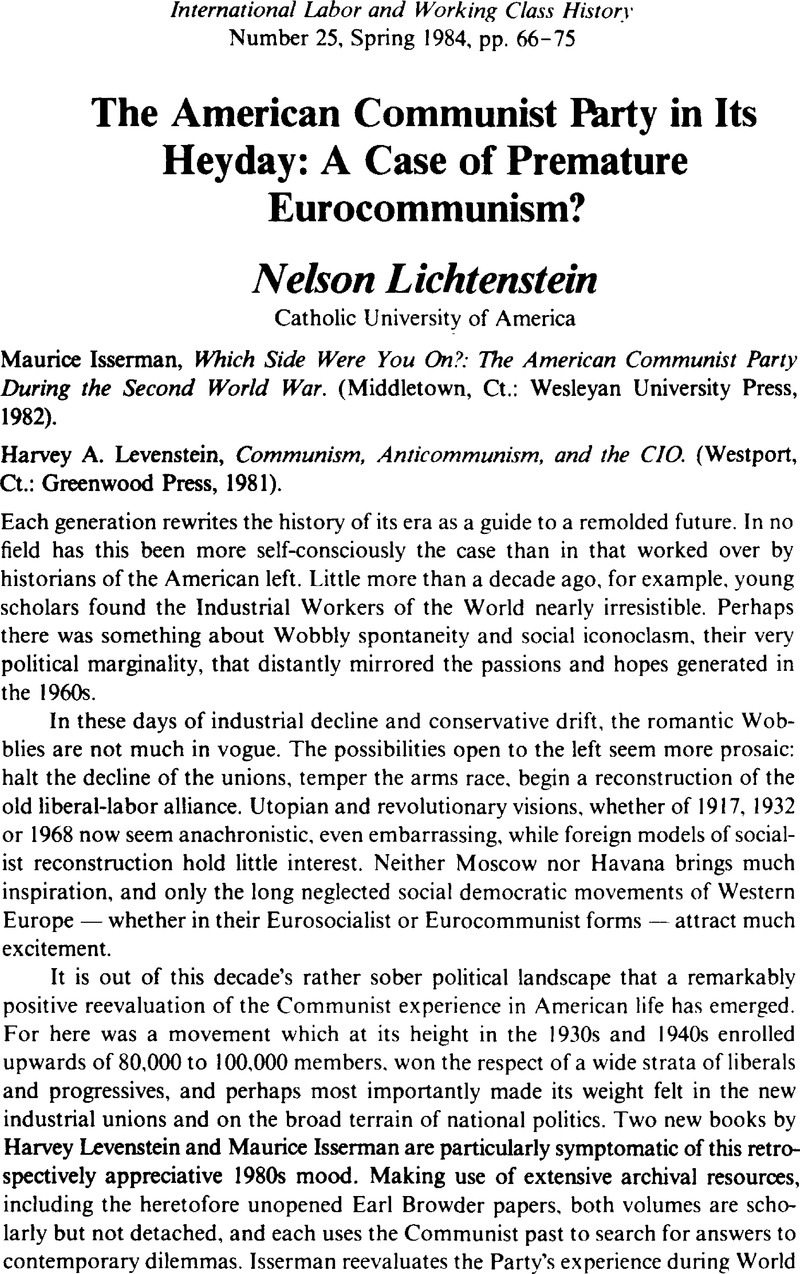Published online by Cambridge University Press: 16 December 2008

1. Garfinkel, Herbert, When Negroes March (New York, 1969), 196–210Google Scholar.
2. Painter, Nell I., The Narrative of Hosea Hudson: His Life as a Negro Communist in the South (Cambridge, 1979), 306–09Google Scholar.
3. In the early 1950s, UAW Local 600 at Ford's River Rouge complex contained one of the largest Communist groupings left in any trade union. The Party element there sought to protect itself by forming the same kind of “left-center” alliance with UAW Local President Carl Stellato as it had earlier tried to maintain with CIO President Philip Murray. But Stellato was a cynical opportunist whose “alliance” with the CP was of even less substance than that maintained by the CIO leadership a decade earlier. By alternately purging and coopting Ford Communists, he eliminated most of their remaining influence by the end of the 1950s. For an analysis of Henry Wallace's relationship to the Popular Front see Markowitz, Norman D.. The Rise and Fall of the People's Century: Henry A. Wallace and American Liberalism, 1941–1948 (New York, 1973).Google Scholar
4. Nelson, Steve, Barrett, James R., Ruck, Rob, Steve Nelson, American Radical (Pittsburgh, 1981), 387Google Scholar.
5. Keeran, Roger, The Communist Party and the Auto Workers Unions. (Bloomington, 1980)Google Scholar; Cochran, Bert, Labor and Communism: the Conflict that Shaped American Unions (Princeton, 1977)Google Scholar.
6. Periman, Selig. A Theory of the Labor Movement (New York. 1928)Google Scholar.
7. Lipsitz, George. Class and Culture in Cold War America: “A Rainbow at Midnight” (South Hadley. 1982). 135–172Google Scholar.
8. Take for example the ClO-Political Action Committee's 1944 “This is Your America” campaign pamphlet, written in the best lyric prose of the wartime Popular Front. “All of us in America are foreigners or the children of foreigners … They built the railroads, they built the highways, they built the factories … ‘I am an American.’ You are proud when you say that. We are all proud when we say that. We have a right to be proud … We love America.” From Gaer, JosephThe First Round (New York, 1945)Google Scholar no pagination. For a fine social portrait of Communists in a major Eastern city see Lyons, Paul. Philadelphia Communists, 1936–1956 (Philadelphia, 1982).Google Scholar Lyons found that in Philadelphia approximately 75 percent of the Party were Jews, of both the first and second generations.
9. Of course, the Red Army's conquest of the Eastern European homelands of so many immigrant Americans also contributed to the Cold War enthusiasm which infected so much of the once radical ethnic working class.